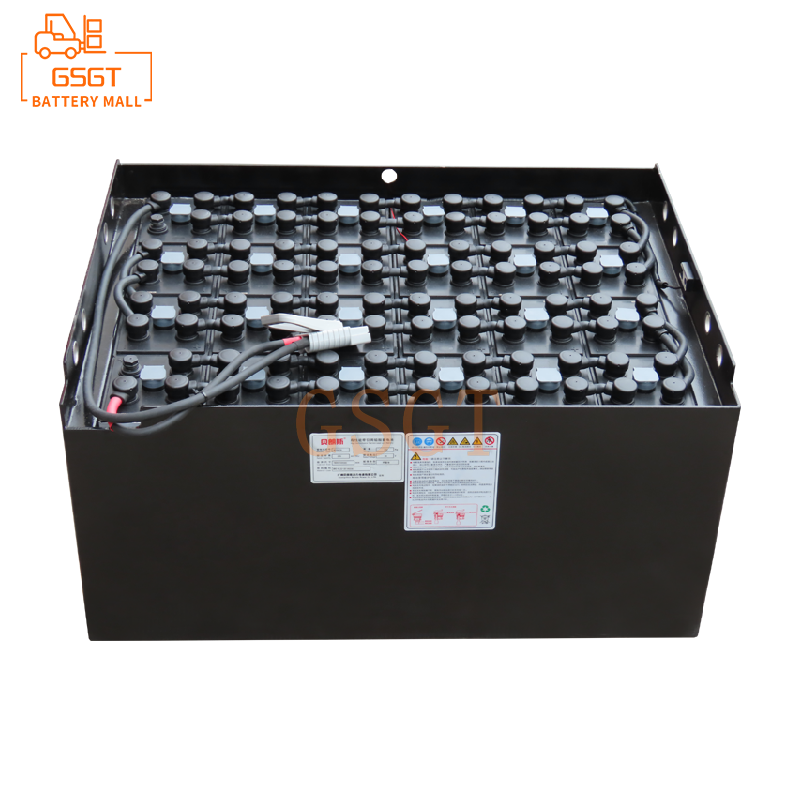Time:2025-07-25 14:45:28
Browse:613
In modern logistics and industrial fields, forklifts, as important handling equipment, cannot operate efficiently without stable lead-acid batteries. The service life and working efficiency of lead-acid batteries largely depend on the correct setting of charging cycles. A reasonable charging cycle not only extends the service life of the battery but also ensures the continuous and stable operation of the forklift, reducing the downtime caused by battery problems.
There are many factors that affect the charging cycle setting of lead-acid batteries in forklifts. First, there is the capacity of the battery. Batteries of different capacities consume electricity at different rates under the same working intensity, and the charging cycles naturally vary as well. Generally speaking, larger capacity batteries can support forklifts to work for a longer time after a full charge, and the charging cycle can be relatively longer. However, smaller-capacity batteries may need to be charged more frequently. Secondly, there are the usage frequency and working intensity of the forklift. If the forklift is in a high-frequency and high-intensity working state every day, the power consumption will be fast. Then the charging cycle needs to be shortened accordingly to ensure that there will be no situation of insufficient power during operation. Conversely, when the usage frequency is low, the charging cycle can be appropriately extended. In addition, the ambient temperature will also have an impact on the charging cycle. In low-temperature environments, the capacity of lead-acid batteries will decline, and the rate of power consumption will accelerate, which may require more frequent charging. In high-temperature environments, although the battery's discharge capacity increases, high temperatures can also accelerate the chemical reactions inside the battery. Overcharging can easily cause damage to the battery, so it is necessary to adjust the charging cycle reasonably.
To correctly set the charging cycle of lead-acid batteries in forklifts, a comprehensive consideration should be made in light of the actual usage conditions. In daily use, the charging time should be determined based on the working duration and power consumption of the forklift. Under normal circumstances, it is appropriate to charge the battery when its power consumption reaches 20% to 30%. This can not only prevent over-discharge from causing damage to the battery but also ensure the charging efficiency. For instance, if the forklift has about 30% of its battery left after each day's work, it can be charged at the end of each day's work to ensure that there is sufficient battery left for work the next day. At the same time, the charging time should be strictly controlled. Generally, the charging time for lead-acid batteries is about 8 to 10 hours. The specific time can be adjusted according to the capacity of the battery and the power of the charger to avoid overcharging.
For forklifts that have not been used for a long time, the setting of the charging cycle is also particularly important. If the forklift is to be idle for a long time, the battery should be fully charged first, and then recharged every 1 to 2 months to keep the battery level between 50% and 70%. This can prevent problems such as sulfation of the plates in the battery due to long-term undercharging, which may affect the battery's performance and lifespan.
The following answers some common questions about setting the charging cycle of lead-acid batteries for forklifts.
Question: Is it true that the shorter the charging cycle, the better, and should the lead-acid battery of the forklift be charged whenever there is free time?
Answer: This idea is incorrect. Although frequent charging can prevent forklifts from suddenly running out of power during operation, overcharging can cause serious damage to lead-acid batteries. During the charging process of lead-acid batteries, hydrogen and oxygen are produced. Overcharging will increase the internal pressure of the battery, causing the loss of electrolyte and accelerating the corrosion of the plates, thus shortening the battery's service life. Therefore, the charging cycle should not be blindly shortened; it should be reasonably set based on the actual power consumption.
Question: Are the charging cycle Settings the same for lead-acid batteries of different brands of forklifts?
Answer: Lead-acid batteries for forklifts of different brands may vary in design and manufacturing processes, and their optimal charging cycles may also differ. Generally speaking, battery manufacturers will provide recommended charging cycles and methods in the product manual. When users set the charging cycle, they should first refer to the manufacturer's suggestions. At the same time, appropriate adjustments should be made in combination with the actual usage conditions of the forklift, such as work intensity and usage frequency, to find the most suitable charging cycle for the brand's battery.
In conclusion, correctly setting the charging cycle of lead-acid batteries in forklifts is the key to ensuring the normal operation of forklifts and extending the service life of batteries. It is necessary to comprehensively consider multiple factors such as battery capacity, usage frequency, working intensity, and ambient temperature, and at the same time refer to the suggestions of battery manufacturers to formulate a reasonable charging plan. Only in this way can the lead-acid batteries of forklifts always maintain good performance and provide reliable power support for logistics and industrial production.

$1060

$3050

$5710

$1690

MESSAGE
Professional And Efficient
Security
Affordable Price
Professional Services